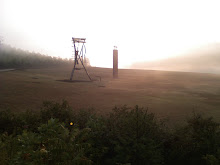
Here's the irony: fashion is an eternal fad while fabric and pollution are not. After all of the inspiration, image-making, and excitement pass, the clothes remain. Pouf skirts. Acid-washed denim. M. C. Hammer pants. They're out there still, in closets, thrift stores, and land fills. Eco-savvy fashion choices mean not only reducing post-consumer refuse, but also pre-consumer waste and pollution. After its origins on the farm, forest, or oil field, that jacket spent some time morphing into its present form. What chemicals were used to grow it? Were the dyes safe? As more designers and manufacturers create with eco-concerns in mind, it's easier to find satisfying answers. Through smart wardrobe management and consumer choices, you can cut down on closet clutter, support clean industry, and look fabulous.
1. Shop with a plan When you bring an article of clothing into your life, it’s kind of like adopting a dog or cat. That cute little number has to have a place in your wardrobe, and you’re agreeing to provide for and give it the longest possible life with you. Abandoning the impulse buy may sound boring, but how exciting is a closet full of stuff that doesn’t work? In the long run, knowing what you're looking for before you shop will save time and eliminate clutter. You'll get more use out of a piece that looks and feels great: What colors work for you? What fits work the best? How will the piece get along with everything else in the closet? If the answer to "Will I still want to wear this rhinestone-studded bustier in two years?" or “Can I eventually find a way to use it in a craft project?” is no, skip it.
2. Love your duds Whatever you've chosen, take good care of it. When you get home, change out of work gear and into your famous dressing gown or leisure suit. Don’t cook or check the tire pressure in clothes you want to wear in public. Learn how to sew a button back on, or how to coax a nimble friend into doing it for you. Get the name of a local tailor or seamstress for major repairs or alterations.
3. Don't go dry Though the industry has improved much since 1992, there is still a high likelihood that your trusty corner cleaner uses perc (tetrachloroethylene), a known carcinogen. See if there is a local green cleaner employing "wet cleaning" or liquid CO2 techniques. Many articles whose tags ask for the dry clean treatment can actually be hand washed, especially silk, wool and linen.
4. Buy vintage or used People unload clothes for all types of reasons, and you know that adage about trash and treasure. From Oscar-worthy vintage dresses to Freecycled denim, you can likely find the piece you’re looking for second hand. You’ll be giving a cast-off garment a second life, and possibly supporting charitable work in the process.
5. Wash well Washing wreaks the most havoc of all. It requires lots of water and energy, so only do it when you absolutely need to and have a full laundry load. Turn articles inside out and use the lowest temp possible. If you know you glowed all over a piece, make a thin salt paste and soak the affected fabric for a half hour before washing. Choose phosphate-free and biodegradable detergents and line dry as much as possible. Treat stains quickly with nontoxic removers. If you’re buying a new washing machine, look for one with an Energy Star label.
6. Wear organic Though cotton is marketed as clean, fresh, and natural, conventional varieties are anything but. It takes a third of a pound of chemical fertilizers and pesticides to produce the cotton for one T-shirt! That means lots of direct, unhealthy exposure for farmers and nearby wildlife, and heaps of unnecessary pollution. Ick. Luckily, organic cotton is becoming easier and easier to find. As mega-stores get into the game, however, it’s important to stay vigilant about what organic means, so you know you’re really getting clean clothes. Also know that though the cotton may have been organic to start with, your T may be full of processing chemicals and metal-laden dyes. See below for more info on labeling and certification.
7. Choose clothes that work for you It’s hard to feel beautiful in your raw silk dress when it’s likely that children’s scalded hands were part of the production chain. Conventional clothing might not say it, but clothing made under fair-wage and labor practices will usually advertise it. SweatShopWatch.org and BehindTheLabel.org are good sources of info.
8. Don’t throw it all away Finally, a stain, a tear, or changing fashion threaten to separate you from your favorite dress shirt. Don’t just abandon your old friend to the waste-stream! If the condition is perfectly good, you can always donate or Freerecycle.org it (see below for donation resources).
Made with info from treehugger.com












